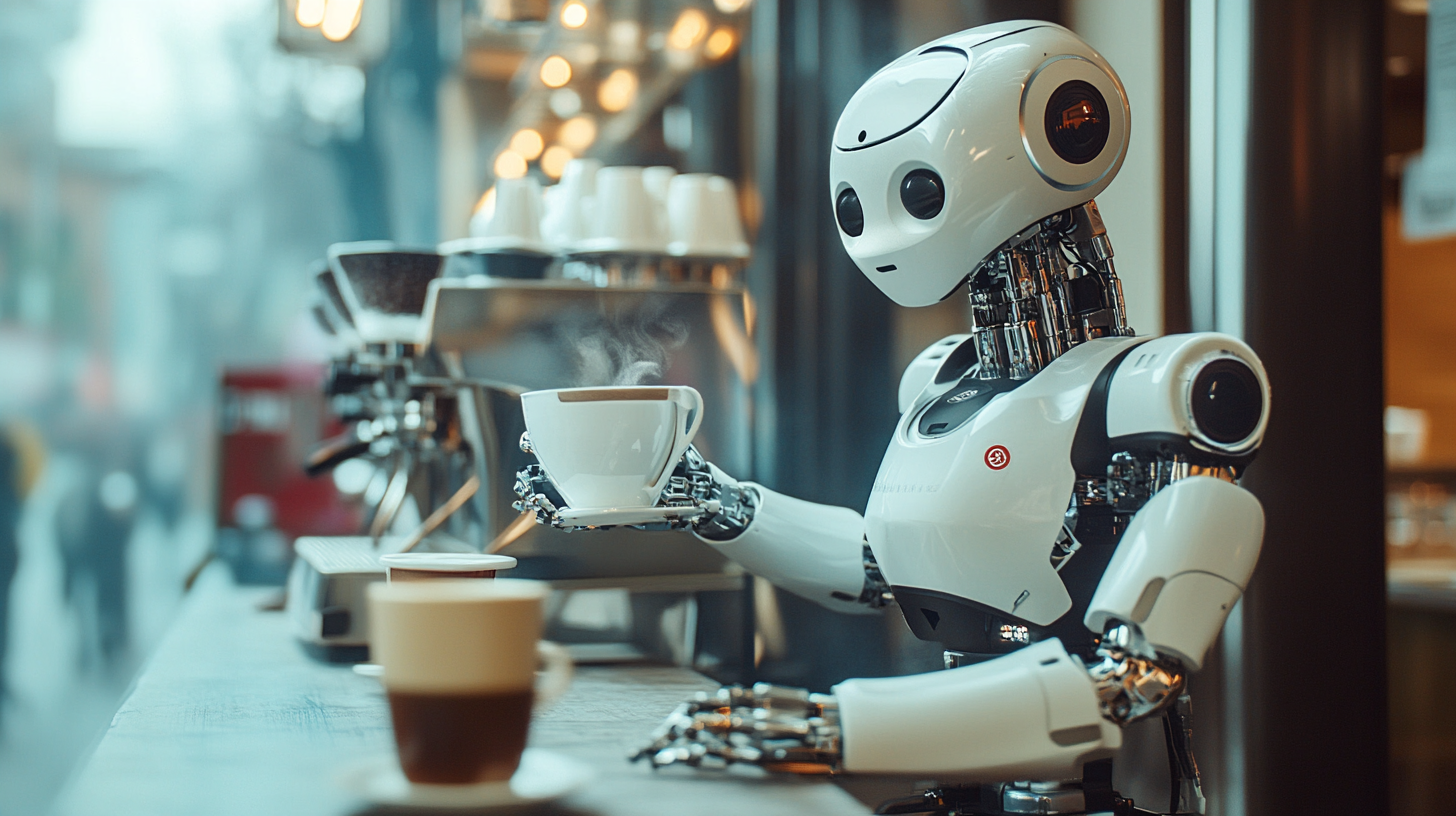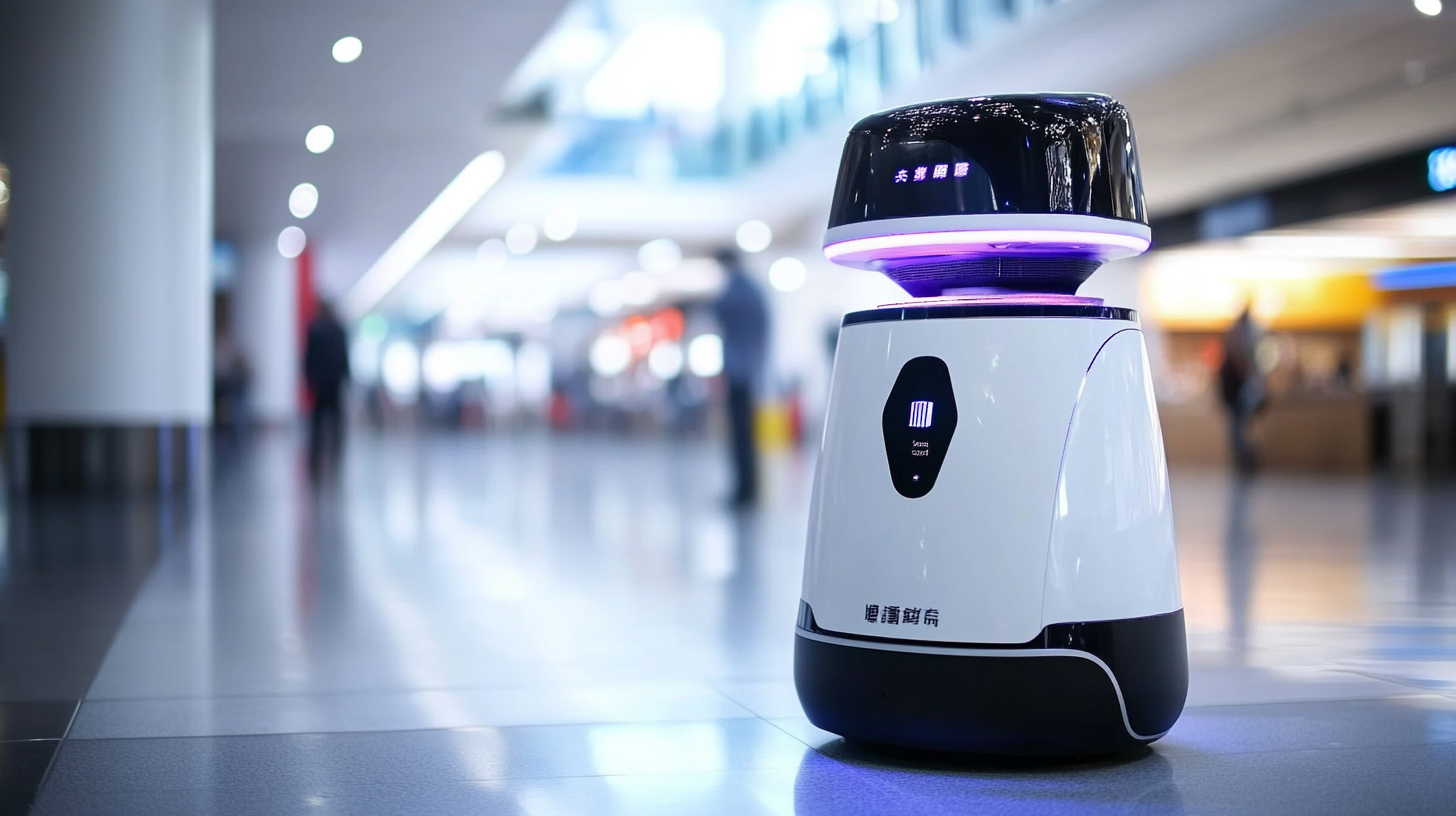China's Robotic Coffee Barista Surges Amidst US China Tariff Standoff with Growth Data Insights
As the ongoing tariff standoff between the United States and China continues to shape the global economic landscape, an intriguing trend has emerged: the rise of the Robotic Coffee Barista in China. This technological marvel not only highlights the nation's capability to innovate amid adversity but also serves as a testament to the resilience of Chinese manufacturing. Amidst the backdrop of escalating tariffs, Chinese companies are seizing opportunities to develop automated solutions that cater to an evolving consumer market. The Robotic Coffee Barista symbolizes this shift, delivering high-quality coffee experiences with efficiency and precision. In this blog, we will explore the growth data insights surrounding this robotic revolution, demonstrating how China’s manufacturing sector is adapting and thriving despite international trade challenges. As we delve into the dynamics at play, we aim to illuminate how the Robotic Coffee Barista is not just a novelty but a beacon of resilient progress in a complex economic environment.

China's Coffee Robot Industry: Resilience Amidst US Tariff Challenges
China's coffee robot industry has demonstrated remarkable resilience amidst the ongoing tariff challenges with the US. While trade tensions create hurdles for many sectors, the coffee robotics market has not only weathered the storm but has also seen significant growth. Companies are leveraging innovative technologies to enhance the customer experience, allowing them to serve high-quality coffee in an efficient and cost-effective manner. This resilience not only highlights the adaptability of Chinese manufacturers but also showcases a growing demand for automation in the food and beverage industry.
**Tip: Keep an eye on technological advancements in automation!** As automation continues to evolve, staying informed about the latest innovations in coffee robotics can give businesses the edge they need to stay competitive. Investing in cutting-edge technology can improve service efficiency and enhance customer satisfaction, ultimately driving growth.
Moreover, China's investment in the coffee robot sector reflects broader trends in consumer behavior. With more people seeking quick and convenient coffee options, robotic baristas meet that demand perfectly. This trend doesn't just cater to traditional coffee lovers; it appeals to a younger, tech-savvy demographic eager for novelty and efficiency.
**Tip: Leverage social media marketing!** Capitalize on the unique appeal of coffee robots by promoting them on social platforms. Engaging content showcasing the robot in action can attract attention and drive foot traffic to locations featuring these innovative machines, boosting overall sales during challenging economic times.
China's Coffee Robot Industry Growth Amid US Tariff Challenges
Market Growth Analysis: Coffee Robotics Surpassing Traditional Methods
The evolution of coffee preparation is witnessing a remarkable shift as robotic baristas gain traction. With an estimated global market for coffee shops projected to soar from $165.7 billion in 2022 to $229.9 billion by 2030, innovative technologies are set to outpace traditional brewing methods. Coffee robotics not only streamline operations but also enhance customer experiences, allowing for consistent quality and faster service. As the appetite for automation grows, businesses that harness this technology stand to gain a significant competitive edge.
Tips for implementing coffee robotics in your business include starting small by integrating one or two robotic units. This approach minimizes risk while allowing you to gauge customer reactions and operational flow. Furthermore, training your staff to work collaboratively with these robots ensures that human touch is not lost, creating a harmonious blend of technology and tradition. Keeping up with advancements in AI will also help you adapt future technologies that enhance efficiency and quality in coffee service.
As concerns like the US-China tariff standoff affect supply chains, investing in robotic solutions can help mitigate disruptions. Utilizing robotics not only secures operational continuity but also allows for adaptability in an ever-changing market landscape. Embracing this transformation is essential for coffee shops aiming to thrive in a competitive environment.
Technological Innovations Driving China's Robotic Barista Surge
China is experiencing a significant surge in the adoption of robotic baristas, driven largely by its advancements in technology and rich investment opportunities in AI and robotics. As highlighted in recent reports, China now ranks third globally in robot density, surpassing both Germany and Japan. This rapid growth in robotics reflects not only the country's embrace of automation in various sectors but also its increasing investment from foreign players looking to capitalize on the booming AI market. The industrial application of robotics is reaping substantial rewards, particularly in cities like Shanghai, where innovations such as robotic exoskeletons are transforming industries and rehabilitation processes.
The recent Chinese Spring Festival further showcased the accelerating trend of AI-powered products, with public enthusiasm for automation visible in numerous applications, including robotic coffee makers. These technologies not only enhance customer experience in bustling urban environments but also streamline operations to meet growing consumer demands. As foreign investors continue to flock to China to tap into its technological prowess, the robotic barista represents a microcosm of the larger economic trends fueled by innovation and automation in the region. The convergence of sophisticated technology and rising consumer expectations is setting the stage for continued growth and evolution in the food and beverage industry, positioning China as a leader in the global robotics arena.
China's Robotic Coffee Barista Growth Data Insights
| Year | Number of Robotic Baristas | Market Growth (%) | Investment (Million USD) | Main Features |
|---|---|---|---|---|
| 2020 | 150 | 15% | 30 | Automation, Mobile Payment |
| 2021 | 300 | 25% | 50 | AI Ordering, Contactless Service |
| 2022 | 450 | 35% | 80 | Customizable Drinks, Real-time Interaction |
| 2023 | 600 | 40% | 120 | Virtual Barista, Enhanced User Experience |
Impact of Tariffs on China's Export of Robotics: A Statistical Perspective
The ongoing tariff standoff between the United States and China has significantly impacted various sectors, including the burgeoning field of robotics. According to a recent report by the International Federation of Robotics (IFR), the global robotics market is expected to grow at a compound annual growth rate (CAGR) of 26% over the next five years, with China leading the charge. However, the tariffs imposed by the U.S. on Chinese goods, including electronic components and machinery, have complicated export dynamics. Data indicates that in 2021, China’s robotics exports saw a decline of approximately 8%, directly correlating to these trade barriers.
Moreover, specific sectors such as automated coffee services are experiencing a surge despite these challenges. The report by Mordor Intelligence highlights that the market for robotic baristas is projected to reach $1 billion by 2025, partly fueled by domestic demand as companies innovate to reduce labor costs. As Chinese manufacturers adapt to the tariff environment by enhancing their innovation capabilities and investing in research and development, they aim to maintain competitiveness on a global scale. Consequently, while tariffs pose obstacles, they also drive the robotics industry in China to pursue efficiency and technological advancement, setting the stage for future growth.

Future Trends: Forecasting China's Coffee Robotics Market Beyond 2023
As the coffee culture continues to flourish in China, the integration of robotics in this sector is predicted to experience exponential growth. According to a recent report by Allied Market Research, the global coffee robotics market is expected to reach $1.5 billion by 2027, with Asia-Pacific projected to account for the largest share due to expanding coffee consumption and technological advancements. Specifically, the Chinese market is set to quadruple its use of robotic baristas, driven by both increased labor costs and a growing demand for consistent quality and efficiency in service.
The surging popularity of automated coffee solutions can be attributed not only to the rise of specialty coffee but also to changing consumer preferences for convenience and speed. Research from Statista indicates that China's coffee consumption is projected to surpass 30 million 60-kilogram bags by 2025, representing a compound annual growth rate (CAGR) of over 15%. With this dramatic increase, coffee shop operators are increasingly turning to robotic baristas to meet demand while minimizing operational costs. As more firms invest in AI-driven coffee technology, the market for coffee robotics in China is likely to surpass $200 million by 2025, paving the way for a new era in the industry.
